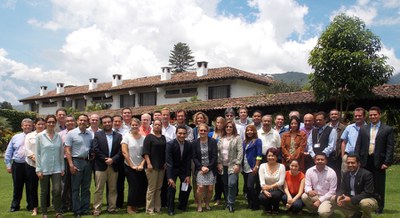REDD+ Finance Workshop, Antigua, Guatemala September 17-18

The USAID-funded Central America Regional Climate Change Project (RCCP), FCMC, Inter-American Development Bank (IDB), and the UN-REDD Programme are supporting a series of two workshops titled “Central America: REDD+ Finance Options and the Links to National REDD+ Strategies and Climate Negotiations”. The first workshop: “Building Multi-Source REDD+ Financing Strategies that Link Subprograms to National REDD+ Strategies” was held in Guatemala on September 17th and 18th. The purpose of this workshop was to assist countries in Central America with developing REDD+ financing plans for the implementation of national REDD+ strategies. The workshop covered a range of REDD+ related funding sources, financial instruments, and markets that can contribute to a REDD+ financing plan. Workshop participants heard from a number of national and international experts on various aspects of REDD+ finance.
FCMC supported the development of a background paper titled “Financial Planning for National REDD+ Programs,” which is expected to be released later this year, and the two speakers – Leslie Durschinger and Nicholas Linacre. Ms. Durschinger spoke on defining the components of a REDD+ National Strategy Financing Plan and Private Sector Investors. Dr. Linacre spoke on Trends in Voluntary and Compliance REDD+ Emissions Markets, including the preliminary results of a forthcoming FCMC publication assessing potential supply and demand from REDD+ from 2015 - 2025.

